Which heating method is the most efficient and economical? Cottage heating without gas - diesel water heating system
This article is about how to heat a house if there is no gas. In it, I'm going to talk about possible alternatives. gas heating, evaluate them by a number of key parameters and offer the reader the most profitable and practical solutions. Let's get started.
Gas is the cheapest heat source. Only now it is not everywhere.
And you can see everyone
Here is a complete list of possible heat sources for a home without gas:
- Solid fuel (firewood, coal, pellets);
- Liquid fuel (diesel fuel, used engine oil);
- Electricity;
- Solar heat recovered by means of solar collectors;
- Liquefied gas (from a gas tank or cylinders). If to your locality the main natural gas is not supplied - this does not mean that you cannot use it for heating gas boiler or .
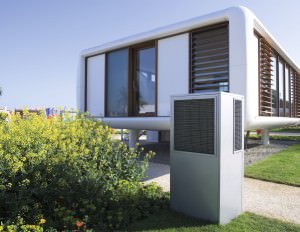
What we appreciate
By what parameters do we compare possible solutions?
There are only three of them:
- Minimum operating costs (that is, the cost of a kilowatt-hour of thermal energy);
- Cost of equipment;
- Ease of use of the home heating system. It should require as little attention as possible from the owner and maximum battery life.

Comparison
Operating costs
Here's how our members line up when assessing their cost-effectiveness:
- The undisputed leader - solar heat... Collectors convert it into heating the coolant completely free of charge. Electricity is consumed only by circulation pumps;
As a rule, solar collectors are used only as an auxiliary heat source. Their problem is fickle thermal power: it changes depending on the length of daylight hours and the weather.

- In second place is a wood-fired solid fuel boiler. Yes, yes, I am aware of the fact that we are in the 21st century. Such are the Russian realities: in the absence of main gas and with a short daylight hours, firewood is still more economical than all other heat sources and provides a kilowatt-hour cost of 0.9 - 1.1 rubles;
- The third place is shared by pellets and coal. Depending on local energy prices, a kilowatt-hour of heat generated by burning them will cost 1.4-1.6 rubles;
- Liquefied gas from the gasholder provides a kilowatt-hour cost of 2.3 rubles;
- The use of cylinders increases it to 2.8 - 3 rubles;

- Diesel-fueled liquid fuel boilers generate heat with an average cost of about 3.2 r / kWh;
Used engine oil with the same calorific value is 5-6 times cheaper. If you have a permanent source of mining, this type of fuel can successfully compete with mainstream gas.
- Obvious outsiders - electric boilers... The price of a kilowatt-hour of heat obtained by heating water with a heating element or any other direct heating device is equal to the cost of a kilowatt-hour of electricity and at current tariffs is about 4 rubles.
Let me emphasize: the so-called economical electric boilers(induction or electrode) - fiction. They, of course, work, but the way the water is heated does not in any way affect the cost of a kilowatt-hour of thermal energy.

Induction electric boiler. Its undoubted advantage is reliability. But in terms of efficiency, it is no different from a device with heating elements.
Installation costs
How much will it cost to make heating in the country or in a country house?
In order not to introduce confusion due to the variation in the parameters of the heating system, I will compare the average cost of heat sources of the same nominal power - 15 kW.
- Gas boiler - from 25 thousand rubles;
Without gas main the owner will have to invest in the equipment of a gas cylinder station or gas tank, which will increase costs by another 150 - 250 thousand.
- Pellet boiler - from 110,000;
- Electric boiler - from 7000;
- Solid fuel boiler - 20,000;
- Liquid fuel (using diesel fuel or mining) - from 30,000;
- Solar collectors total capacity 45 kW (a threefold power reserve compensates for downtime in the dark) - from 700,000 rubles.

Obviously, a reasonable balance between the cost of a kilowatt-hour of heat and the heating equipment provide only firewood and coal. A good alternative to them - waste oil - cannot participate on equal terms in our competition due to the inaccessibility of this energy carrier.
Free solar heat, in fact, turns out to be excessively expensive at the installation stage: the cost of the thermal energy accumulator will be added to the prohibitive costs of the collectors themselves.

Ease of use
Laziness is known to be the engine of progress. You want to heat your home not only cheaply, but also with minimal expenditure of time and effort.
What are the different heating options with autonomy?
- Electric boilers are in the lead... They work indefinitely and do not require maintenance from the word "at all". The coolant temperature can be controlled automatically using a remote electronic thermostat. Electrical equipment allows you to program daily and weekly cycles (for example, to lower the temperature during your absence);
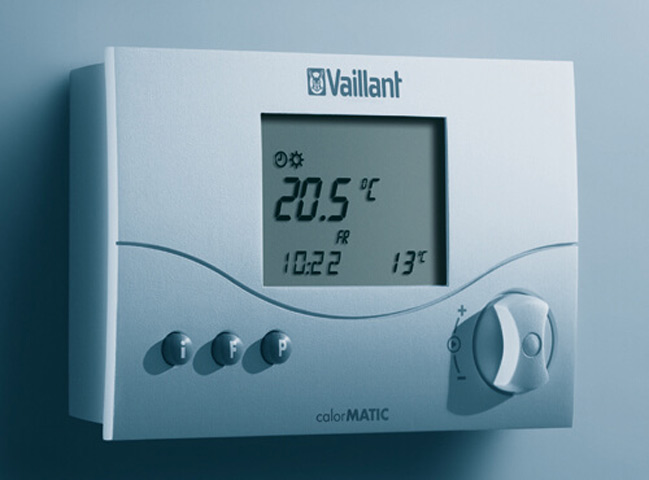
- Gas boiler with gas holder provides autonomy for several months, or even a whole season. It differs from an electric boiler unfavorably in the need to remove combustion products, therefore, the location of the device is tied to ventilation, a chimney or the outer walls of a private house;
- Autonomy liquid fuel appliance limited only by the volume of the fuel tank;
A separate room has to be allocated for the diesel boiler. The reasons are a high noise level during the operation of the burner and the smell of diesel fuel.

- The use of several parallel-connected cylinders reduces the autonomy of the heating equipment up to a week;
- A pellet boiler can work about the same amount on one load;
- Solid fuel boiler needs to be booked every few hours and the ash pan must be periodically cleaned. This period can be increased by limiting the heat output by a covered air damper, but incomplete combustion of the fuel will reduce the efficiency of the device and, accordingly, increase the owner's heating costs.
What's the bottom line? And in the end, comrades, we have to choose between the limited autonomy of the pellet boiler with its rather high cost, continuous kindling of a solid fuel device and the exorbitant cost of thermal energy from an electric boiler.

the main problem solid fuel heating- frequent kindling.
Loopholes
How can you heat a dwelling, combining acceptable autonomy with low operating costs?
We can go one of two ways:
- Try to increase the autonomy of the system with a solid fuel boiler;
- Minimize the cost of electric heating.
Now - in more detail about each possible solution.
Pyrolysis boiler
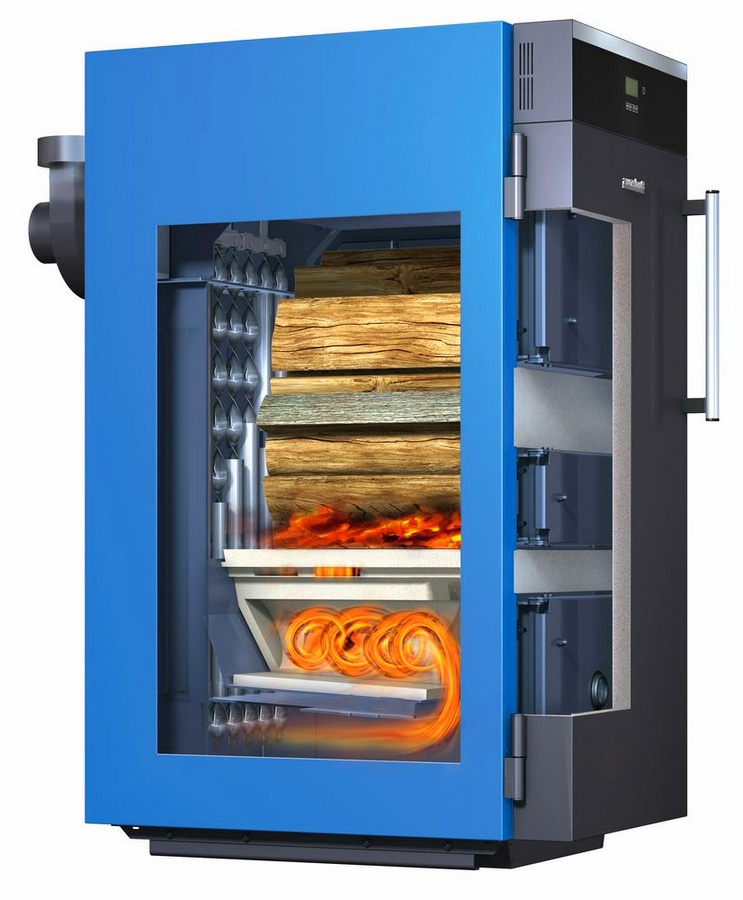
This is the name of a type of solid fuel device that breaks the combustion process of coal or firewood into two stages:
- Smoldering with limited air access (so-called pyrolysis). Incomplete combustion of fuel produces a combustible mixture of volatile hydrocarbons and carbon monoxide CO;
- Afterburning of pyrolysis products in a separate furnace. It is usually located under the main one and provides heating to the temperature required for pyrolysis.
What does such a scheme give?
- Flexible power control by simply changing the speed of the blower fan;

- Maximum efficiency in the entire range of power values (since the products of incomplete fuel combustion are afterburned in the second furnace chamber);
- Autonomy in 10-12 hours. It is achieved precisely by limiting the combustion rate of solid fuel.
Top combustion boiler
Another step towards increasing the autonomy of solid fuel heating equipment was made by the engineers of the Lithuanian company Stropuva. They just transferred the process of fuel smoldering from the grate to the upper part of the firebox. As a result, with an increase in the volume of the bookmark, it is not the thermal power of the boiler that increases, but the duration of combustion.
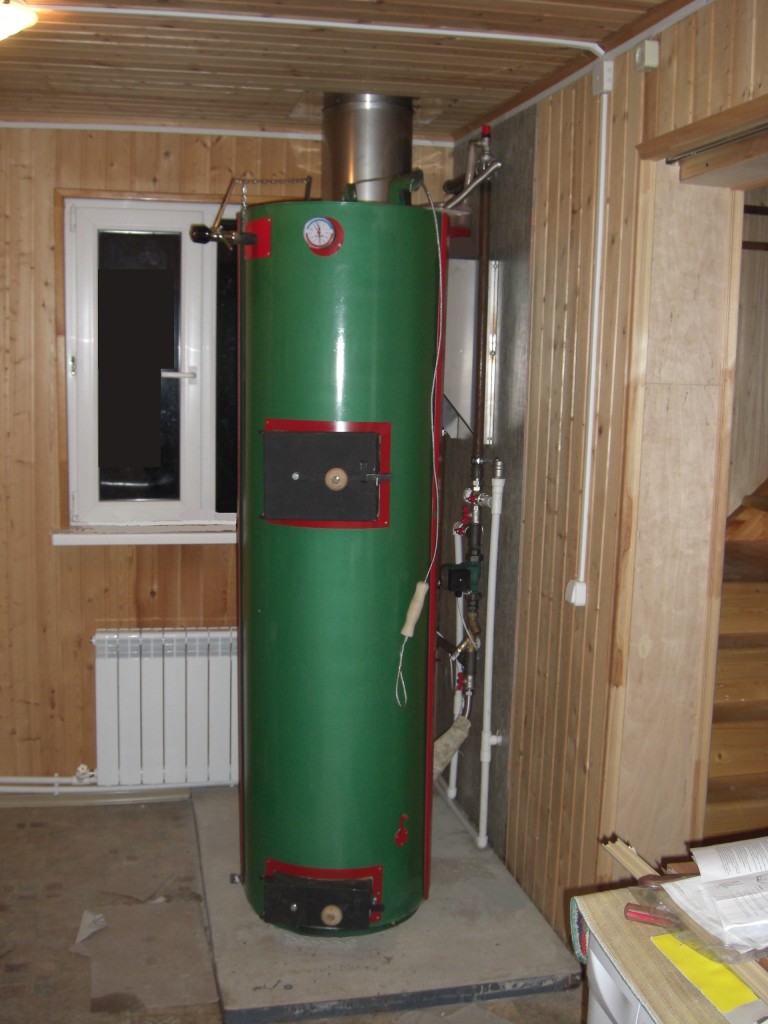
How was this result achieved?
The boiler is a vertical cylinder with a telescopic air duct, ending in a massive steel disc with ribbing (called a stascoblin). As the fuel tab burns out, the air duct drops down under its own weight, at each moment of time providing air supply directly to the area of fuel smoldering.
The same disk separates the area of fuel smoldering and the area of afterburning of incomplete combustion products, turning the upper combustion boiler into a kind of pyrolysis. A small amount of ash remaining on the surface of the wood is carried away by the ascending stream of hot gases.

Maximum autonomy has been demonstrated by the Stropuva coal-fired boiler. He worked on one tab for 31 hours.
Heat accumulator
Is it possible to heat Vacation home with an ordinary solid fuel boiler, without spending a significant part of the day on kindling and cleaning it?
Yes. This will help a heat accumulator - a regular water tank with thermal insulation and several outlets for connecting heating circuits. Water has a fairly high heat capacity. So, a tank with a volume of 3 m3, when the coolant is heated by 40 degrees, accumulates 175 KWh of heat, which is enough to heat a house with an area of about 80 m2 during the day.
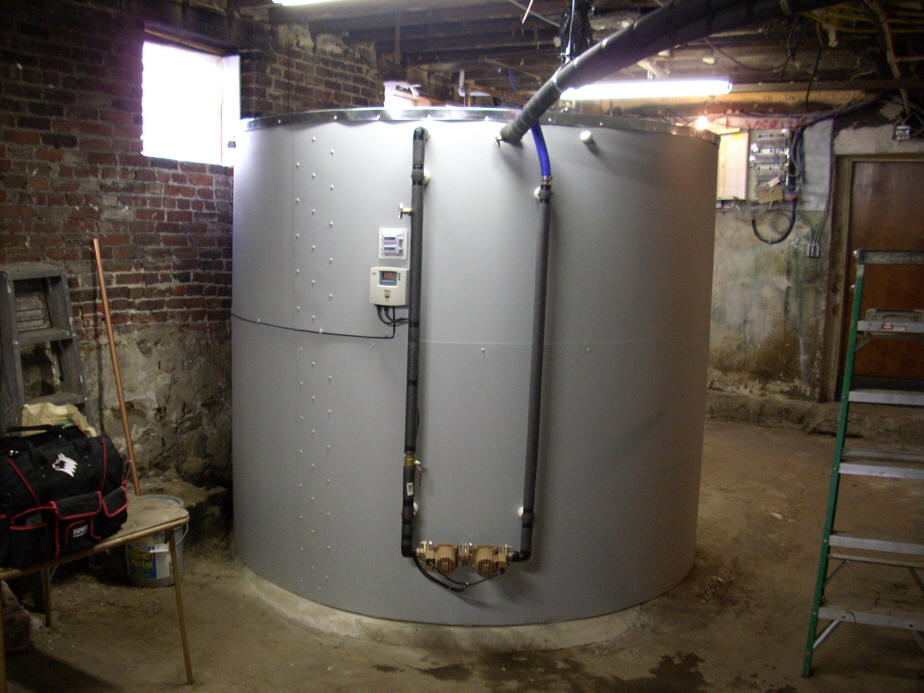
How to assemble a heating system with a heat accumulator with your own hands?
It forms two circuits with forced circulation:
- The first one connects the boiler heat exchanger to the battery;
- The second combines the heat accumulator with heating devices - radiators, convectors or registers.
As a result:
- The boiler is fired up once or twice a day and operates with a fully open damper, at rated power (and, accordingly, with maximum efficiency);
- The rest of the time, the heat accumulator gradually releases the accumulated heat to the house.
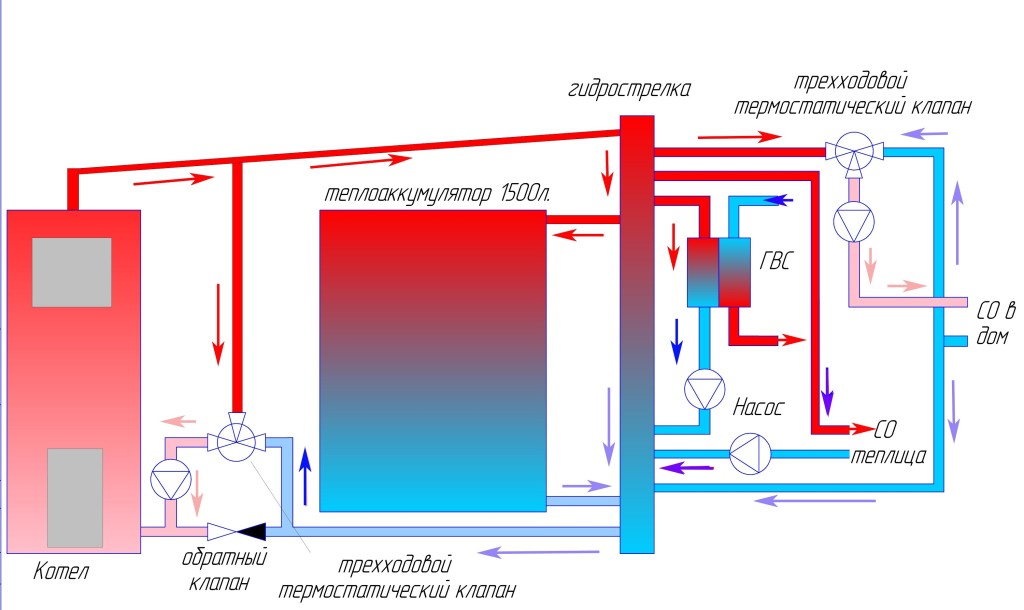
Such a scheme will help and heat the house with minimal costs to the owners of electric boilers, but only if there is a two-tariff meter. At night, during the minimum tariff, the boiler heats the water in the tank, and during the day, the accumulated heat is gradually released by the radiators.
Warm floor
Underfloor heating systems transform the entire surface of the finish floor covering into the heater.
For heating can be used:
- A pipe with a heat carrier laid in a screed;

- Heating cable laid in a screed or in a layer of tile adhesive under the tiles;
- Film heater is a polymer film with high electrical resistance conductive tracks. The heater is placed under a finishing coating with sufficient thermal conductivity - laminate, parquet or linoleum.
Underfloor heating allows you to reduce heating costs by 30-40% compared to convection appliances - radiators or convectors. Savings are achieved due to the redistribution of temperatures: the air is heated to a maximum of 22 - 25 degrees at floor level, while the temperature is minimal under the ceiling.
![]()
With convection heating, for the minimum comfortable +20 at the floor level, the air under the ceiling will have to be heated to 26 - 30 degrees. Heating affects only heat leakage through the ceiling and walls: they are directly proportional to the temperature difference on both sides of the building envelope.
I have used foil heaters to heat the floor under work tables. With a ridiculous consumption of electricity (on average 50-70 watts per square meter) they provide subjective comfort during operation even when the room temperature is 14 - 16 degrees.

Infrared heaters
Traditional heating heats the air by direct contact with the heater. However, with a relatively small area of the heating element and its high temperature another method of heat transfer begins to prevail - infrared radiation. It is he who is used infrared heaters positioned as devices for economical heating with electricity.

Why is infrared heating better than convection heating?
Placed under the stream or on the wall, the device heats the floor and all objects in the lower part of the room with radiant heat. The effect is about the same as when using a warm floor - below the air temperature becomes maximum, under the ceiling - minimum.

Moreover, the radiant heat warms the skin and clothes of people in the room. It creates a subjective feeling of warmth, which allows you to reduce the comfortable temperature in the room from 20-22 to 14-16 degrees. How the temperature difference with the street affects heating costs - we have already found out.
At -10 outside the window, a decrease in the average temperature in the room from 25 to 15 degrees will reduce the heat consumption by (25 - -10) / (15 - -10) = 1.4 times.

Heat pumps
What is a heat pump?
Structurally, it is identical to ... an ordinary refrigerator. The design of this device allows you to take heat from a colder environment (soil, water or air) and give it off more warm air inside the house.
How is this achieved?
This is what the cycle of any heat pump looks like.
- The compressor compresses the gaseous refrigerant (usually freon), converting it from gas to liquid. In full accordance with the laws of physics, he heats up;
- Freon passes through the heat exchanger, where it gives off heat;
- The expansion valve is next in the path of the refrigerant. With a sharp increase in volume, freon returns to a gaseous state and cools down sharply;
- Passing through one more heat exchanger, it removes heat from a medium that is warm in comparison with the cooled freon;
- The heated refrigerant is returned to the compressor for a new cycle.

As a result, electricity is spent only on the operation of the compressor, and for each kilowatt of it electrical power the owner receives 3-6 kilowatts of thermal power. The cost of a kilowatt-hour of heat is reduced to 0.8 - 1.3 rubles.
Moreover, all types of heat pumps fully possess the advantages of electric heating devices:
- They do not require maintenance and removal of combustion products;
- They can be programmed for daily and weekly cycles, further reducing heat consumption.
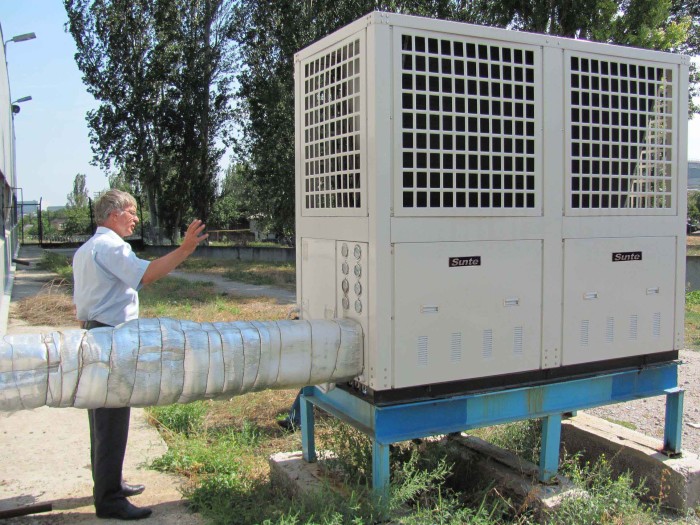
It is useful for a potential buyer of a heat pump to know a few things about these devices:
- The warmer the low-potential source of thermal energy, the higher the COP of the device (coefficient of performance, the number of kilowatts of heat per kilowatt of electrical power when operating for heating);
- COP also increases as the temperature of the indoor (in the house) heat exchanger decreases. That is why low-temperature heating is usually used with heat pumps - warm floors or convection appliances with an increased fin area;
![]()
- The lower temperature of the external heat exchanger is limited by the freon phase transition temperature and cannot be lower than -25 degrees. That is why heat pumps operating according to the air-to-water and air-to-air schemes can be used for heating only in the southern regions of the country;
- Achilles' heel geothermal and water pumps - high price installation of external heat exchangers. Vertical soil collectors are immersed in boreholes several tens of meters deep, horizontal ones are placed in pits or trenches, and their total area is approximately three times the heated area of the house.
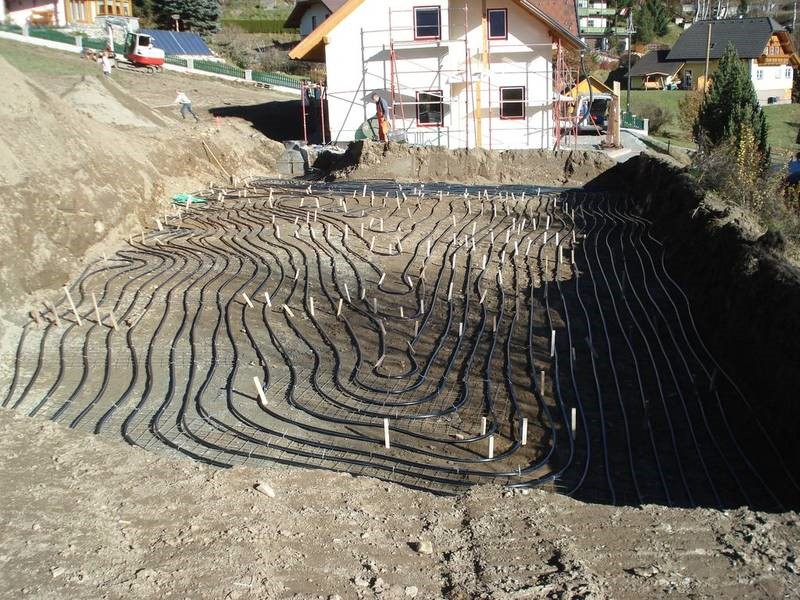
A water heat exchanger requires a non-freezing reservoir or well with sufficient flow rate. In the latter case, the manufacturer's instruction prescribes to drain the waste water into another well - the drainage one.
A special case of a heat pump is an ordinary air conditioner. In heating mode, it uses heat extracted from the outside air by an external heat exchanger. The COP of a modern inverter split system reaches 4.2 - 5.
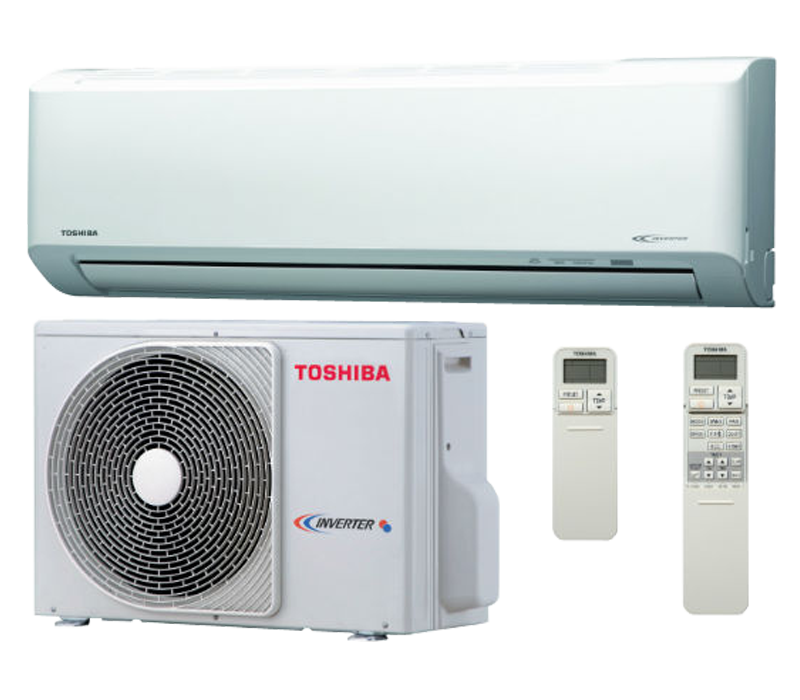
The main source of heat in my house is precisely the split systems installed in each room. How profitable is it to heat the house with air conditioners and how expensive will it cost to buy and install them?
Here's a quick report:
- Two floors with a total area of 154 m2 are heated by four inverter air conditioners - three with a capacity of 9000 BTU and one with a capacity of 12000 BTU;
- The cost of one air conditioner at the time of purchase ranged from 20 to 25 thousand rubles, depending on the model and manufacturer;
- Installation of one inverter cost an average of 3.5 thousand rubles;
- Electricity consumption in the winter months is about 2,000 kWh. Of course, electricity is consumed not only for heating: the electric stove makes its contribution, Washer, lighting, computers working around the clock and other equipment.

In the photo - the external block of the split system, which is responsible for heating the attic.
Conclusion
As you can see, even in the absence of main gas, the house can be heated at reasonable costs and without much discomfort. As always, the video in this article will offer you additional information. I look forward to your additions and comments. Good luck, comrades!
Competently executed piping of the heating system is a guarantee of comfortable temperature living conditions. Of course, the most common and profitable option for heating your own home is piping with a gas boiler. But what if, for some reason, the connection to the centralized gas pipeline is not provided? From this article you will find out what types of heating a private house without gas exist.
Heating without gas: is it possible?
Many of us are convinced that the use of alternative sources of heating at home is financially unprofitable. However, heating without gas and electricity is a real and affordable method of creating the necessary temperature conditions for living in the house. Moreover, some thermal heaters, in the end, turn out to be several times more profitable in maintenance than the usual gas and electric boilers. Despite the fact that gas and electricity are the most modern types of energy resources, they can be easily replaced with alternative options, which, by the way, were very popular several centuries ago.

So how to heat a house without gas and electricity? And the first thing that comes to mind is a solid fuel boiler, that is, a heating unit operating on firewood. This method is very popular among the population, in whose area there is no gas pipeline. In addition, there are a huge number of models of heating devices that can be used not only to warm up housing, but also as a cooking appliance.
Such solid fuel heating of a house without gas and electricity is one of the effective and high-quality methods of heating a dwelling, and it does not matter what its area and purpose (dacha, house for permanent residence, shed or even a greenhouse).
The principle of operation of such systems is simple: first, the water in the boiler is heated, after which it goes to the heating circuit and radiators, giving them its thermal energy... The heat exchange cycle ends when the coolant reaches the farthest point in the circuit. After that, it goes back to the heater for further heating.
And if you want to equip your home with a high-quality and efficiently working heating system, then at present, manufacturers of such functioning equipment offer a lot of options for heating elements.
According to experts, this type of fuel is one of the most affordable, as well as safe, based on the standards that apply to equipment of this type. If you want to perform piping of the circuit with forced injection, then the presence of a circulation pump is a necessary measure. In this case, your heating will be linked to the power supply. Although when power outages occur, you can use all kinds of uninterruptible power supplies and batteries.
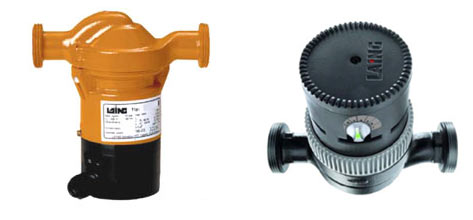
Important! Most often, the choice is made in favor of a 12 volt circulation pump. The principle of its operation is simple - in the presence of power supply, the pump operates in normal mode with simultaneous charging of the battery. In the absence of power from the network, the battery turns on. The process is automatic.
Alternative systems - nano-heaters and underfloor heating

Another alternative method heating circuit devices at home can be called solid fuel blocks that operate on coke and coal. In addition, there are also electrode, anode-capillary and nano heaters, which can become an excellent source of heat in rooms where there is no possibility of connecting to the gas main. The last type of creating comfortable living conditions in the room is the well-known infrared film warm floor, which, by the way, can be used as a floor heating unit, and they can also insulate wall ceilings, which is very convenient.
VIDEO: Infrared film warm floor - step-by-step instruction mounting
Applications of solar collectors
Previously, rooms could be heated using traditional methods. Today, manufacturers of innovative heating equipment offer potential consumers a huge number of devices that will help create the most comfortable temperature conditions for living in a house without using the usual types of fuel.

One of the options for heating a private house is the use of special solar collector installations. Equipment of this kind works by converting solar energy into thermal energy. In fairness, it should be noted that such collectors are used, for the most part, for arranging country houses... Since in the cold season to receive enough solar energy to heat the home is unlikely to work.
Heating in the country without gas using natural thermal collector installations has a lot of advantages:
- high energy efficiency with low financial costs;
- environmentally friendly safety, both for human health and for the environment;
- there are no difficulties in the construction of such a system, as well as in its operation and maintenance;
- attractive design that fits perfectly into structures.
And, despite the fact that the energy-heating device itself will cost you a little more than a gas or electric boiler, many people more and more often prefer this particular alternative to heating their home. After all, every year the cost of traditional fuel is gradually increasing, while the energy of the sun gets to us absolutely free. And with a well-executed piping of the heating unit, you can achieve comfortable temperature conditions in the house with minimal financial costs.
Heating by means of a heat pump unit
In the event that you live in an area where there is no firewood and gas, and you do not know how to heat the house, then today there are many types of fuel that will help solve this, at first glance, a serious problem.

First of all, you should pay attention to electric boilers. But at the same time, it should be noted right away that such units have a significant drawback - a lot of money is spent on their maintenance, since electricity is currently one of the most expensive sources of heat.
It is for this reason that most people seek to find alternative solutions to the problem of heating their homes. So, heating without gas and firewood is characterized by the use of fuels and technologies that are completely safe for health. One of these devices for creating a thermal arrangement of a dwelling is a special pump that operates using energy resources obtained from natural sources. This device is popular among residents of settlements remote from urban areas.
The biggest drawback of such heaters is the high financial costs for the purchase and installation of equipment. Moreover, under the condition of its constant operation, self-sufficiency is no more than 10 years, since no additional maintenance or fuel costs are required.
Heat pumps have an order of magnitude more advantages:
- zero fuel cost;
- ease of installation and maintenance of the device;
- environmental Safety;
- high heat transfer - with proper piping, even a room with a large area can be heated.
We hope our advice will help you make the right choice, and you will be able to equip your home with a high-quality, efficiently working heating unit!
VIDEO: Economical heating without gas ZUBADAN
The use of wood is one of the most ancient ways to generate heat. Progress does not stand still: at first, people used open fire, then they built walls around the fire, which spoke of the invention of the stove.
Later, on the basis of the stove, mankind began to invent the so-called boilers, where, unlike stoves, in which heat was transferred to other parts of the room directly through the air, it began to be transferred thanks to heat carriers such as antifreeze and water. But the ovens did not go out of use either. Today they continue to enjoy wide popularity.
Wood-burning stove heating has a number of advantages:
- Autonomy... If the firewood is already prepared for the winter and there is a stove, then nothing will prevent you from safely surviving the winter frosts.
- Simple installation. Indeed, the installation of the stove is not a difficult task, it does not require special skills and craftsmanship.
- Appearance. The stove can be built in the form of a fireplace. So, the stove will perfectly fit into the interior of the room and will help create an atmosphere of comfort.
- Complete non-volatility.
- Availability. Wood is not considered a very expensive fuel. If the house is located near woodlands, then firewood can be obtained there. You can also make the so-called artificial firewood - briquettes, which are made from the remains of woodworking.
Despite such a large number of advantages, there are a number of disadvantages:
- Efficiency. The efficiency of the stoves is much lower than that of other heating installations, since most of the heat is emitted through the chimney.
- Long warm-up. The oven heats up slowly, which takes a lot of time.
- Fast burning. One clutch of firewood burns for 3 hours. This means that you will have to constantly feed the fire with new clutches. Recently, such ovens have appeared on the market that operate on the basis of slow combustion. In such ovens, the masonry begins to burn from the upper layers.
The stove can be built in such a way that it heats the coolant.
In this case, you will have to tinker with the installation, but it is better to turn to the services of specialists. But with this method, several floors can be heated at once, along which the coolant will also move.
Coal heating is another option if the home is out of gas. But there is one thing between wood heating and coal heating significant difference: if, when heated with wood, the room heats up immediately from the flame, then when using coal, the room heats up due to the heat carrier.
Modern boilers also use the principle of top combustion, which is achieved due to the fact that air is supplied from the top of the device thanks to a fan. Due to this, the fuel burns slowly, due to which the time between fuel loads increases significantly. The design of modern coal-fired boilers includes a firebox, an ash pan, a heat exchanger, and a chimney.

Another issue related to this fuel is the choice of coal. There are a huge number of types of coal that differ in price and quality:
- Brown coal. This species burns at low temperatures, but is currently being pushed out of the market by other brands.
- Stone. This brand burns with a long flame, therefore it is widely used for heating.
- DPKA. This coal is widely used for heating small private houses.
- Anthracite. According to experts, it is the coal of this brand that is the highest quality coal. This charcoal has a lustrous black color. The carbon content reaches 90%.
Coal can be bought in bags, or you can order a certain amount with delivery.
So the pros:
- Boiler versatility. The coal-fired boiler can be used not only for heating with coal. You can also put firewood, briquettes and other types of solid fuels in it.
- High heat dissipation.
- Long burning.
There are also disadvantages:
- Coal dust. When coal is used as the main fuel, coal dust remains everywhere, which requires cleaning.
- Ash pan cleaning. When coal burns, a lot of ash remains, so the ash pan will have to be cleaned periodically.
The principle of converting solar energy into thermal energy has been known to mankind for a long time. But only relatively recently did people begin to view the Sun as alternative source energy. A solar collector is a heating device capable of storing energy sun rays going to heat the coolant.
The principle of operation is also simple: under the plates of the structure there are tubes along which the coolant moves. When heated, it automatically flows into the water tank.
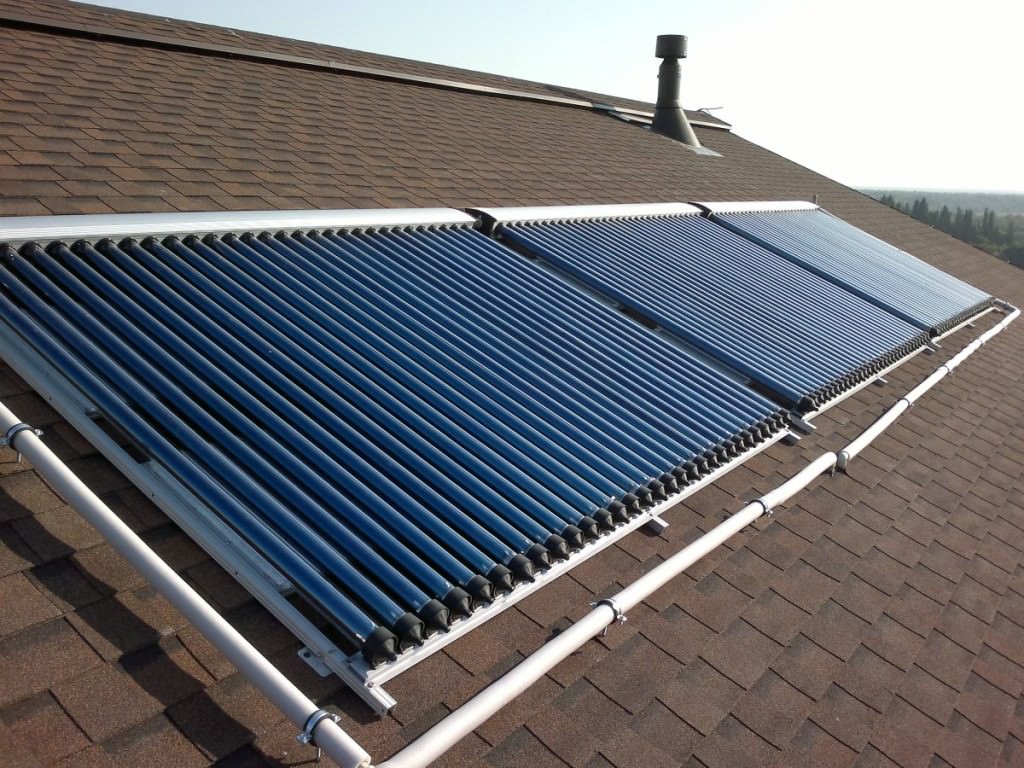
There are three types of collectors:
- Vacuum collectors. They are designed to store as much solar energy as possible with minimal waste. This is achieved due to the fact that there is a vacuum space between the outer sheets and the inner element. In general, such a unit is a system of many tubes, inside of which there is no air. Inside these tubes there are other tubes that actually heat up. Such collectors are capable of heating water up to 300 degrees Celsius.
- Flat collector. Such units are rectangular panels. They are transparent. The inner wall of this panel is covered with thermal insulation material. Under it there is a system of pipes through which the coolant moves. Such collectors heat water up to 200 degrees.
- Air manifold. Such units use air as a heat carrier. The efficiency of such collectors is low, which is the main disadvantage of this type. But they can be made independently without special technical skills and abilities. They are cheap.
Electric heating involves converting electrical energy into thermal energy. For this purpose, apply different boilers that run on electricity. The following are the most common methods of electric heating:
- Electric boilers. Heating elements are built in such units. There may be one or several of them. If there are several of them, then the user himself can activate only one of them or all of them at once. It is a system of pipes through which the coolant moves and is heated by the flowing electric current. Powerful aggregates are connected to three-phase network.In some electric boilers there is no heating element. Instead, electrodes are provided. Electric current is transferred from one electrode to another through the water. So he heats her up. Usually, in such systems, not water, but antifreeze is used as a coolant.
- Heating electric convectors. By appearance they resemble ordinary radiators, only they are connected to electrical network... They also do not use a coolant. The heating element is enclosed in a special insulator. A current passes through it, it heats up, as a result of which the surrounding air heats up, which immediately rises up.
- Infrared heaters. They have a special device that converts electrical energy into infrared rays. These infrared rays travel in a straight line and only heat objects that are in their path. For full heating, you will have to install several such units. Thanks to this device, you can create zones with high and low temperatures in the room.
- Electric floor. It is a system of high resistance current conductors. They are installed in the floor and heat up as a result of the passage of current through them. This heat then heats up the surface of the floor, the heat from which is transferred to the air in the room.

These are the types electric heating exist at the moment. Now you should consider all the pros and cons this method heating.
So, the advantages of electric heating are as follows:
- The efficiency of electric boilers is high. According to various sources, approximately 99% of electricity is converted into thermal energy.
- Environmental friendliness. When using electricity, no emissions of harmful substances into the atmosphere occur.
- Automaticity. Most electric boilers operate in automatic mode, that is, a person only needs to adjust accordingly.
- Security. Unlike gas, where there is a risk of leakage, electricity is less dangerous.
And now about the cons:
- The first and most important disadvantage is electricity tariffs. Most boilers that are connected to a three-phase network operate on high power therefore the power consumption is high.
- Dependence on an uninterrupted supply of electricity. If suddenly, for some reason, there is a power outage, the devices stop their work. But this problem can be solved by installing additional automation.
Security measures
After you have purchased an electric or solid fuel boiler, you should carefully read the instructions for use. There will also be indicated safety measures when working with the unit. If for some reason the boiler stopped working, or interruptions in its functioning began to occur, then you should call the wizard, as he will fix the problems in accordance with the instructions.
Which to choose
After evaluating all the advantages and disadvantages different ways heating the house, we can safely say that the best are solid fuel boilers or oven. They work efficiently and heat the house perfectly. Other heating methods such as electric boilers, electric convectors, solar convectors can be used as additional heating.
In any case, the house must be insulated at a high level, otherwise, the heat received from the heating devices will simply go outside.
Every owner of a private house thinks about how to heat a house without electricity and gas. Since these services are quite expensive, everyone wants to save money and at the same time provide their homes with heat.
Among the options for heating a house without electricity and gas are the following:
- Water heating(the main component of the boiler is connected to pipes that are located throughout the house).
- Solid fuel heating(Such heating is carried out with the help of wood. Boilers are installed, which reduce fuel consumption, as well as the production of harmful substances).
Traditional oven

Despite the fact that a traditional stove heats up for a very long time, it also retains heat in the house for a long time.
The traditional Russian-style stove with a stove bench has long lost its popularity. However, many homeowners opt for a more modified stove that heats the home perfectly. Now it is not so easy to make it yourself and with high quality, so you may have difficulties. A brick oven is the best option for heating country house.
To make such a stove, it is worth using the services of master stove makers. If they do their job at a high level, then even the most severe frost will be of no concern to you. But in order to keep warm in such a house as long as possible, it is necessary to insulate the walls and windows.
Thanks to such a stove, it will be possible to spend the night and live in the house, since all the conditions will be created for this. Some models of traditional stoves are equipped with hobs. However, not everyone can cook on such a stove, since it requires adjusting the strength of the fire. Also, it is necessary to use special dishes here.
Solid fuel / liquid fuel boilers
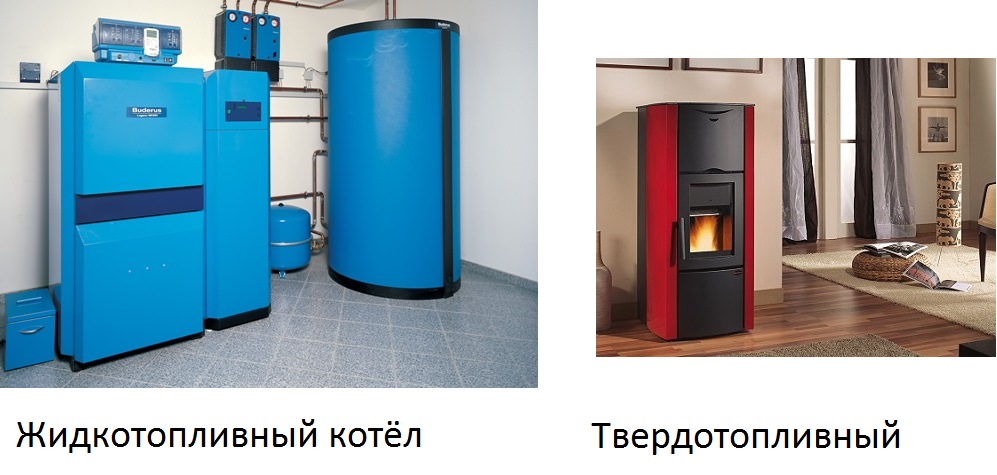
Solid fuel boilers work by burning fuel. Peat, coke, pellets and coal can be used as firewood. In the process of operation, solid fuel boilers emit a specific gas, which they also burn. Due to this, the room is heated.
Often, coal is used for the operation of such units. There are 2 separate chambers: firewood is loaded into one, and gas is burned into the other.
Oil-fired boilers- these are devices that burn waste oil, kerosene, fuel oil, biofuel. They include a combustion chamber and a nozzle. The injector structure consists of a fuel pump, combustion control system and air and fuel regulators.
Liquid fuel appliances can be of the following types:
- Single stage.
- Two-stage.
- Modulated.
Their use will allow you to maintain temperature regime and will also provide more economical fuel consumption.
solar collector
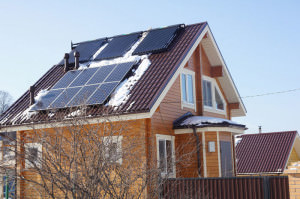
Is a device that converts solar energy into thermal energy. Reviews of this device once again prove the effectiveness of the system. After the sun's energy is transformed into heat, it is transferred to the coolant. Now the direct rays of the sun can be used both for heating the room and for heating the water.
During one year of use of the solar collector, the consumption remains at the same level. That is why the use of such a unit can be made for quite a long time.
With the correct installation of the solar collector, the water temperature can be between 50 and 65 degrees. And in the summer months, when the sun is especially close to the ground, heating can be carried out up to 100 degrees.
The foundation solar installation - flat collector. It contains an absorber that can absorb the rays of the sun, converting them into thermal energy. To reduce thermal losses, the collector is placed in a thermally insulated box with transparent walls.
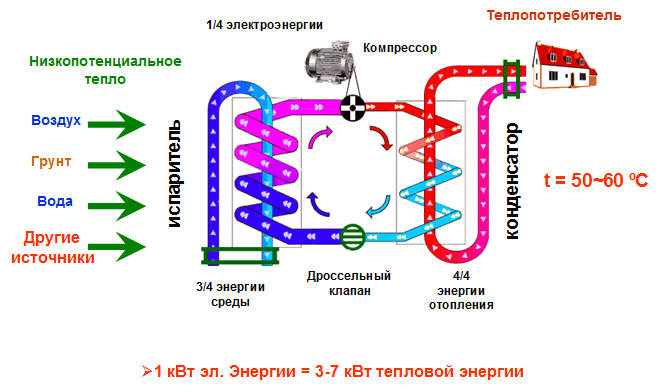
How the heat pump works
consists of the following parts:
- Powerful compressor which creates high pressure.
- Evaporator-radiator consisting of thin tubes with high thermal conductivity.
During the operation of the pump, the compressor influences the coolant. This substance can evaporate and boil even at the lowest temperature. The compressor builds up pressure so that the refrigerant evaporates even at the lowest temperatures.
The coolant has a condenser on its way, in which the coolant gives off its heat to the radiator. It cools down to liquid and then returns to the compressor. A cycle of this type can have several repetitions.
The proportion of energy consumed by the compressor can be around 20%. The remaining 80% can be borrowed from the environment. The heat pump can take energy from the atmosphere or from geothermal sources. The peculiarity of modern units differs in that they are configured not only for heating, but also for cooling the room.
Heating systems based on heat pumps consist of the following parts:
- Probe(piping system, which is a large coil. It can be placed in water or soil. The task of the probe is to collect heat energy).
- (The principle of operation of such a mechanism is familiar to everyone. However, such pumps can be of several types: soil-water, water-air, water-to-water heat pump, air-to-air heat pump).
The advantages of the thermal mechanism can be described as high efficiency. Such a device can give from 4 to 5 kW of thermal energy. This ensures a comfortable temperature in the home.
Coal and wood stoves can be an excellent alternative to boilers, pumps and collectors. Now they can be bought ready-made, or you can build them yourself using the necessary materials.
Having bought such a stove, you can not only maintain the optimal heat temperature in your home, but also use it for cooking. This option is perfect for heating a house in which there is no gas. This will save a lot on electricity.
Advantages and disadvantages

Coal stove
The advantages of coal and wood stoves include the following:
- The use of coal in areas where it can be mined in large quantities will not cost a lot of money.
- Coal burns long and clean, compared to other materials.
- Wood burning stoves are efficient when installed them together with the air exhaust system.
- Such furnaces are designed without a screw. and any other electromechanical devices.
- Regular use of such stoves will reduce the cost of heating your home.
- The coal stove is a backup heating system, which will allow you to heat the house in the event of a power failure or lack of gas.
As for the disadvantages of such ovens, they can be as follows:
- The fire hazard of such structures is at a high level.
- Not every home has a place to store a large amount of firewood and coal.
- Such ovens do not have automatic system feed, so they must not be left unattended.
- The presence of coal is not found in every region.
Outcomes
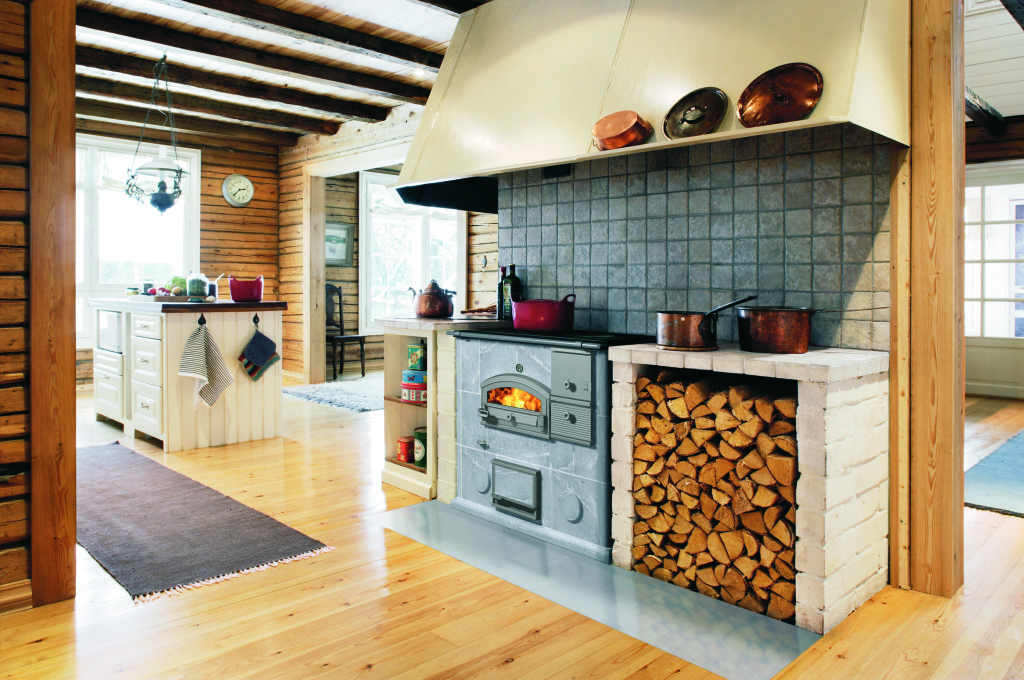
It is quite possible to heat the house without using electricity or gas. Such methods differ in the amount of required expendable materials and cost.
For example, the installation of solar collectors will cost a lot, however, such a heating system is considered the most economical and profitable. Everything else is not so expensive, so you can choose the heating option that you can afford.
When choosing a heating option for a private house, you need to build on its size. If you have a small house, a heat pump or wood-burning stove is sufficient. If the area of your house is very large, then the best option will be the use of solar collectors and solid fuel or liquid fuel boilers.
Homeowners who have more than one different types energy carriers, it is very convenient to choose the right equipment for heating your home. But what about those people who have no choice at all? There is no natural gas nearby, and the electricity limit is so small that it is not possible to use it as an energy source for heating a house? In this case, there are several options, which our article is intended to consider. The same options will be useful to those homeowners who want to arrange economical heating of a private house without gas and electricity.
What energy sources are there to choose from?
By default, we immediately exclude the two main energy sources from the list: electricity and natural gas. Then we have at our disposal:
- various biomass: wood, coal, straw, sawdust and so on;
- imported hydrocarbon fuel: liquefied gas in cylinders or diesel fuel;
- alternative energy sources.
The latter include installations capable of extracting heat contained in air, land or water. But the most affordable ways to heat a house without traditional energy resources is the combustion of biomass in order to heat water or air. The situation is more complicated with liquefied gas or diesel fuel, their initial cost is quite high, and together with delivery it will be completely transcendental. Again, electricity is needed for high-quality combustion of diesel fuel.
Just starting to develop alternative heating for a private house is still considered very expensive and not available to everyone. But behind him is the future, because in terms of efficiency, such heating is unmatched. If you do not take into account the various exotic sources of energy, then the choice will have to be made from two options:
- inexpensive and affordable, but troublesome combustion of biomass;
- expensive, but economical and comfortable sources of alternative energy.
Diesel fuel and propane should be excluded from the list, these sources are not suitable for anyone. To effectively burn diesel fuel, you need electricity, which means a solar battery. Propane consumption even for a small house will be so great that you will quickly get tired of changing and bringing new cylinders. As a result, heating costs will still be unacceptable.
Non-volatile heating with wood and coal
It's no secret that there are a number of devices that allow you to get heat from wood and coal without being connected to the mains. Here they are:
- brick ovens;
- metal ovens;
- solid fuel boilers.
For reference. Fireplaces also successfully burn firewood, but they can only be attributed to heating the house with a stretch. Rather, these are interior elements that create comfort and coziness, but there is little warmth from them, except in one room.
Heating stoves
A well-chosen and well-constructed brick oven can provide good heating houses without gas. By placing it in the center of the building so that at least one furnace wall goes into each adjacent room, you can get an excellent heat source without using water systems. If the layout of the house does not allow placing a brick stove so well, then a water coil is built into its firebox. He will be able to supply heat to radiators in 2-3 small rooms.
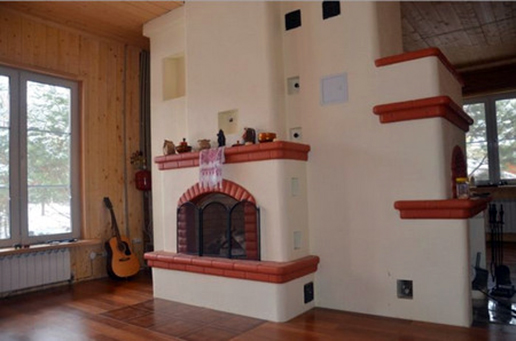
Various metal stoves will also help to heat the house without gas. This option will cost significantly less than the construction of a capital brick structure, which requires a foundation. It is easier to install a modern steel or cast iron stove, and it looks great, especially with built-in fireproof glass. Some models are equipped with water heating coils that are connected to a small heating network.
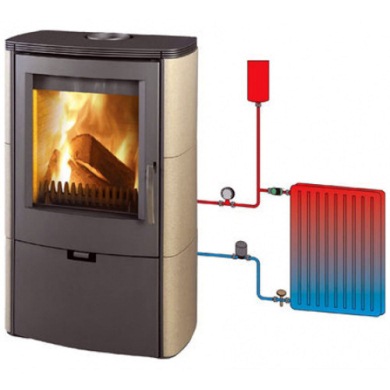
Solid fuel boilers
Optimal heating system a country house without gas and electricity is the installation of a solid fuel boiler. The simplest models of units are produced in a non-volatile version, where the combustion air flow is controlled by a mechanical thermostat with chain driven... But in this case, a number of recommendations must be followed:
- you need to ensure a good natural draft of the chimney;
- when installing the boiler, make sure that the branch pipe for connecting the return line is not higher than the level of the incoming pipe. If necessary, the unit is placed in a small pit;
- the heating system must be gravitational (gravity) and communicate with the atmosphere through an open expansion tank located at the highest point;
- for autonomous heating with a solid fuel heat generator to function reliably and trouble-free, it is necessary to correctly calculate and select all pipe diameters, observe all slopes. At the same time, try not to make too long dead-end branches;
- the boiler must be equipped with a safety group.
Important! In gravitational networks, the coolant moves slowly, wood-fired heating unit more prone to effervescence than pumping systems. That is why it is so important to comply with all design parameters. It is strongly recommended to use a tank - heat accumulator of sufficient capacity in the circuit.
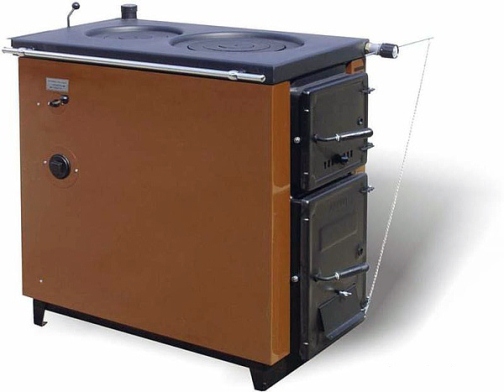
Having considered all types of heating using biomass, it can be noted that the solid fuel boiler will surely take the first place in efficiency, its efficiency reaches 75%, while the best stove will give no more than 60-65%. The version with a boiler and a gravity circuit is applicable even in two-storey houses, where the heating will work no worse than a full-fledged system. It will only require more of your time and attention.
Renewable heat sources
Before you start considering alternative options heating a country house without gas, we will make a reservation that, unlike stoves and solid fuel boilers, none of the high-tech installations can operate without electricity. As you review it, you will understand why. Hence the conclusion: you need to start with generating electricity.
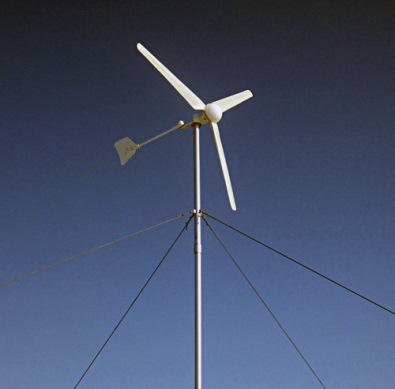
There are 2 ways to do this: wind power generators and solar panels... A wind farm is a great solution, but not cheap. One of the solutions to the problem is to purchase a large wind turbine together, for several houses at once. A more affordable way is to buy a solar panel and batteries for the dark. For joint work with DC sources, which are solar generators, there are special circulation pumps... When there is electricity, let's go directly to the devices that heating without gas and electricity can provide:
- solar collectors;
- heat pumps.
Solar collectors
If without going into design details, then solar collector- This is a device consisting of many pipes connected to each other, through which water flows. It is heated directly from the infrared radiation of the sun, after which the water is used for heating or for the needs of hot water supply. But in order for the heating system to work without gas, the coolant must be moved along it with the help of a pump, and it needs electricity.

The device has only two drawbacks, but both are significant. The collector cannot work at night and is not able to accumulate much heat. The most powerful models have a storage capacity of 200-300 liters, which is enough for hot water supply, but not enough for heating. Because of this, you need to install a lot of devices or use this heat source as an auxiliary one, which makes it possible to save energy.
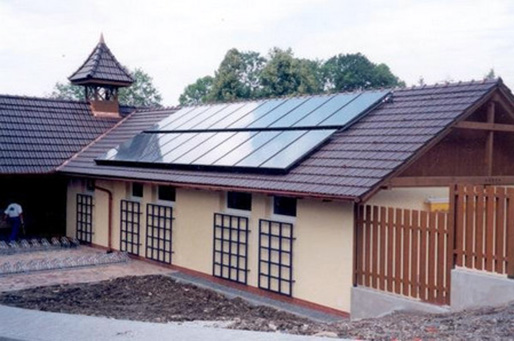
Heat pumps
The top of efficiency and environmental friendliness is a heat pump. Its principle of operation is the same as that of an air conditioner. The unit does not produce heat, it extracts it in one place and moves it to another - to your home. In theory, any substance whose temperature is above absolute zero has thermal energy. Heat pumps can extract it from air, earth, groundwater and surface water. To extract and transfer 10 kW of heat to the house, the unit consumes about 3 kW of electricity, traditional sources are very far from such indicators.

At the same time, these 3 kW of electricity must be taken somewhere. If solar panels are used for this purpose or wind farm, then the considerable cost of the generators will be added to the significant cost of the pump. That is, it makes sense to install a heat pump in an electrified house. Now it is clear why these technologies are still inaccessible to a wide range of users.
So, if there is no gas, then you can heat the house with wood or coal. In such a situation, the first place is clearly occupied by a solid fuel boiler, followed by wood stoves. A high-tech heat pump is not in such demand due to its high cost.



